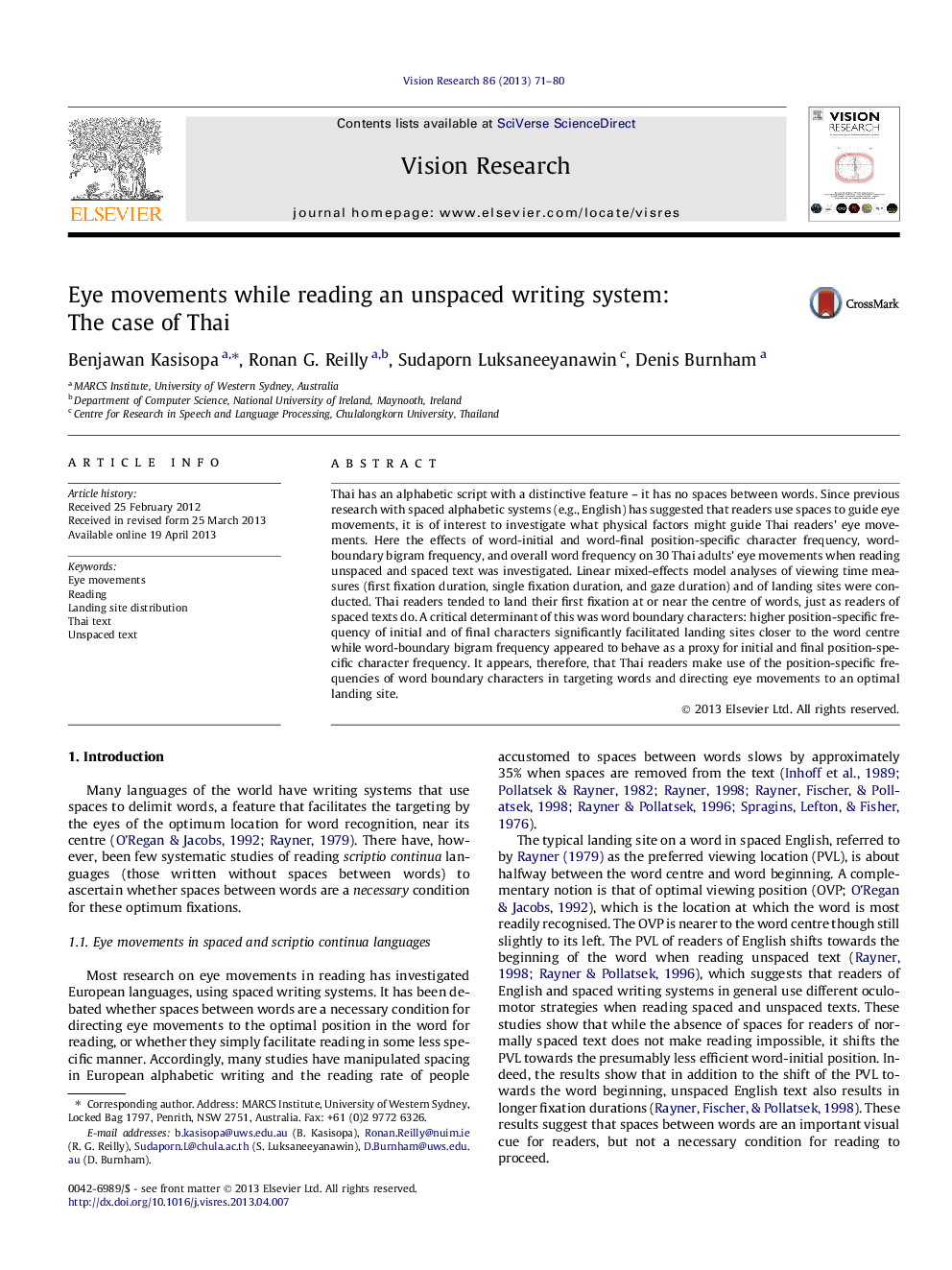| Article ID | Journal | Published Year | Pages | File Type |
|---|---|---|---|---|
| 4033802 | Vision Research | 2013 | 10 Pages |
•This study explores word-targeting eye movements in Thai, a writing system that does not delineate words with spaces.•Thai readers’ PVL is left of word centre similar to that for spaced writing systems.•We found strong evidence for the use of word-boundary character statistics to aid the reader in centrally fixating the word.
Thai has an alphabetic script with a distinctive feature – it has no spaces between words. Since previous research with spaced alphabetic systems (e.g., English) has suggested that readers use spaces to guide eye movements, it is of interest to investigate what physical factors might guide Thai readers’ eye movements. Here the effects of word-initial and word-final position-specific character frequency, word-boundary bigram frequency, and overall word frequency on 30 Thai adults’ eye movements when reading unspaced and spaced text was investigated. Linear mixed-effects model analyses of viewing time measures (first fixation duration, single fixation duration, and gaze duration) and of landing sites were conducted. Thai readers tended to land their first fixation at or near the centre of words, just as readers of spaced texts do. A critical determinant of this was word boundary characters: higher position-specific frequency of initial and of final characters significantly facilitated landing sites closer to the word centre while word-boundary bigram frequency appeared to behave as a proxy for initial and final position-specific character frequency. It appears, therefore, that Thai readers make use of the position-specific frequencies of word boundary characters in targeting words and directing eye movements to an optimal landing site.
